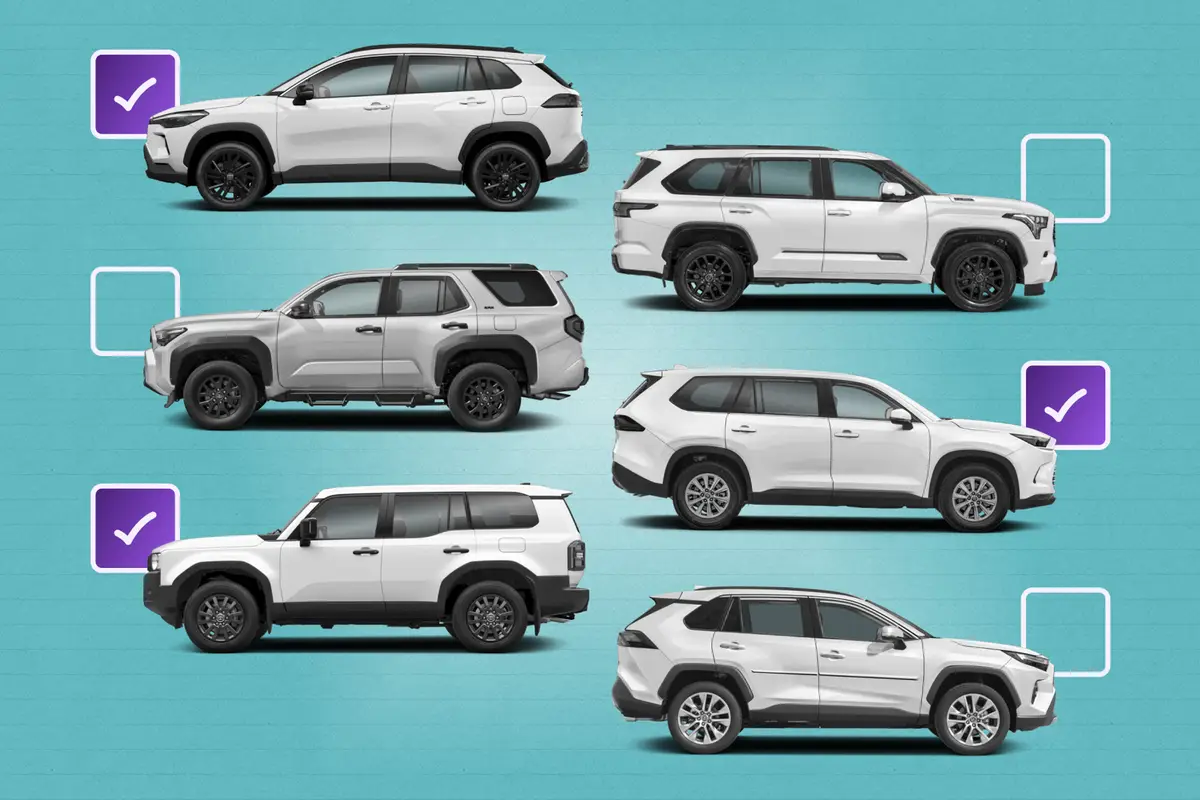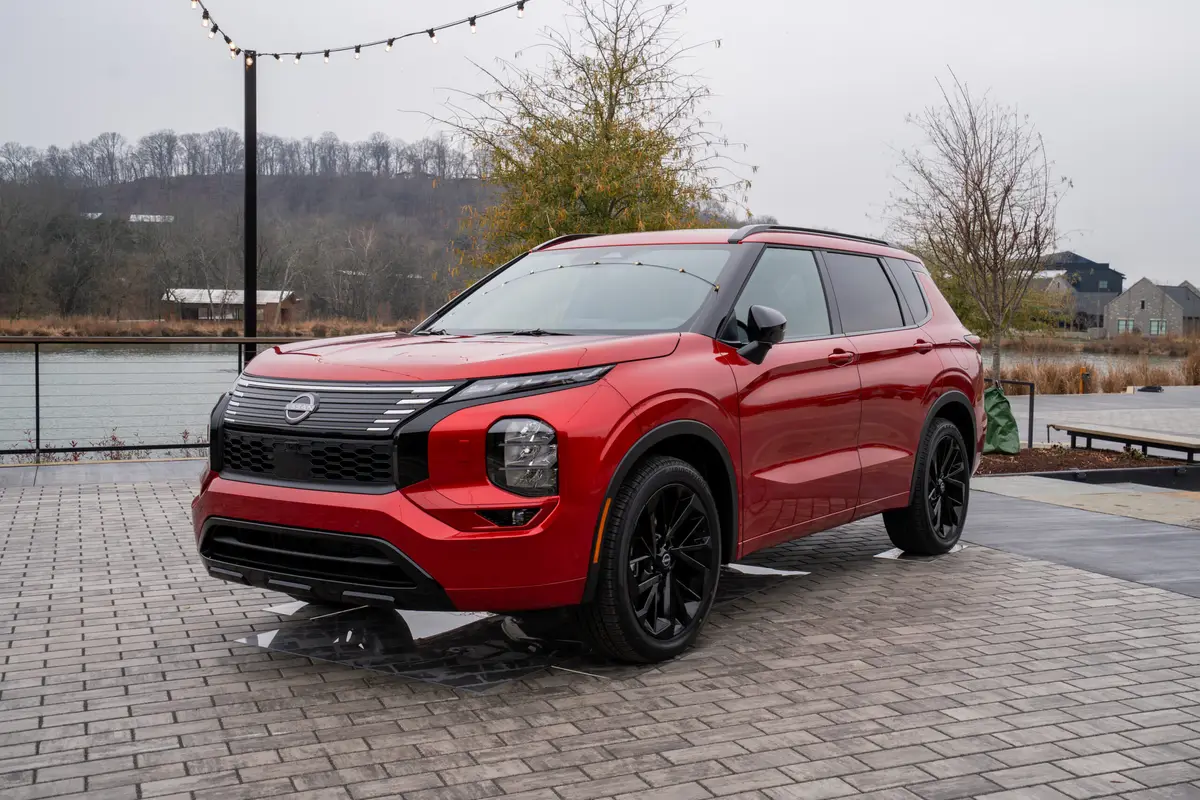First Drive: Does the All-New 2019 Ram 1500 Deliver?
The all-new delivers an impressive amount of advanced technology, a new look and is now upgraded in almost every metric, but Ram may need to pull a few more tricks from the magic hat if it wants to catch its two major competitors.
This new version of the Ram half-ton pickup truck, which dates back to the early 1900s, could be considered the 15th (or so) generation of the model, depending on how you cut it. That's a long time to be building and improving on a pickup truck, but if you know how competitive the half-ton class is nowadays, you know this is not the time to be shy. As best we can tell from our first drive of several of the new trim levels, there's plenty here to give the Ford F-150 and Chevrolet Silverado 1500 a run for their money.
The 2019 Ram 1500's trim levels have decreased to six: Tradesman, Big Horn, Rebel, Laramie, Longhorn and Limited (although ).
We drove several versions in and around San Antonio, each configured with either crew or Quad cabs, all 4x4s, and each with the 5.7-liter Hemi V-8 and eight-speed automatic transmission. A separate drive event this summer will feature both the V-6 (305 horsepower/269 pounds-feet of torque) and V-8 (395/410) engines equipped with a 48-volt battery pack that allows for a stop-start feature and can add as much as 90 pounds-feet of torque to the V-6 and 130 pounds-feet for the Hemi. This eTorque mild-hybrid system will be standard on the V-6 and a $1,995 option on the V-8. Note that Fiat Chrysler Automobiles and the EPA are in the settlement stages regarding the 3.0-liter EcoDiesel V-6 for the 2018 model, but the company expects to have the diesel engines certified for the 2019 truck before the end of the year.
If you're wondering about regular-cab Ram 1500s, a lower-cost, current-generation Ram 1500 with regular, Quad and crew cabs at one plant indefinitely, while an all-new plant will produce 2019 Ram 1500s with just Quad and crew cabs. Ram will decide when to build the new generation exclusively based on demand for, and profitability of, the older models. We're guessing both generations will be sold for at least a year.
How Are the Interiors?
Interiors are becoming the most important part of the half-ton puzzle and Ram seems to be owning it. For most buyers doing direct comparisons, the previous-generation Ram 1500's interior quality would have been at or near the top. But this new model resets the bar.
Designers got more focused and deliberate about material and design choices at each trim level. The most dramatic interior upgrade is the largest information screen in a pickup, the all-new 12-inch touchscreen Uconnect system that allows for multiple types of screen configurations with the added feature of being able to prioritize which apps appear as shortcut buttons at the bottom of the screen. You can change the order around to suit your needs, just like on your smartphone.
The entry-level Tradesman interior offers thicker and tougher cloth seats, with all the same cubbies as the higher trim levels and a fold-forward center seat that becomes an armrest, plus a convenient under-seat storage bin for out-of-sight security. For 2019, crew cabs will also have a flat rear cargo floor with larger hidden storage bins underfoot as well. Big Horn versions get more trim accents and leather seat options, while the Rebel and Laramie versions up their game with impressive anodized and aluminum accents around consoles, doors and the dash. Naturally, upper trim levels like the Laramie Longhorn and Limited include more exclusive (and expensive) leathers, woods, logos, labels and, in one case, even a special brand seared into the dashboard wood.
Look inside the center armrest console and you'll find a few "Easter eggs" in the form of a small cargo divider etched with four silhouettes of the most recent Ram 1500 generations. Likewise, just in case you need a few formulas or angle identifiers, Ram has included some job-site math solutions on the underside of the armrest.
Lastly, to call this new Ram's interior quiet is an understatement. Although we didn't do any instrumented testing, a significant improvement in cabin quietness is evident, with upgraded door seals and thicker insulation sprayed all around the cabin. In addition, the 1500 has noise-canceling technology in the cab that is also tied into a vibration canceler on the frame to help mitigate any bad resonance that would be perceived in the cabin when the Hemi V-8 goes into V-4 mode.
How It Drives on Pavement
The first Ram we drove was a mid-level Laramie with the newly retuned coil springs and all-new frequency response damping shock absorbers. The easiest way to describe these new shocks is that they seem to accommodate both harsh and slow inputs in the same way a more sophisticated and expensive remote-reservoir shock — or even an active air-ride suspension — would be able to do. This setup is likely to be one of the most popular trims, a good way for buyers to keep the overall price down.
On the San Antonio freeways and the outer-ring highways, the suspension tuning was a standout feature, turning choppy ruts and expansion joints into invisible obstacles — at least from the perspective of our highly tuned butt dyno. If there's one way the extra weight savings (roughly 225 pounds) shows up in this new pickup, it's how the standard coil springs can hold the chassis level and quiet, even over bumps and broken tarmac — not something the previous models did very well. We're guessing the redesigned independent suspension and the more sophisticated electric steering setup play a part in the more stable and sensitive feel as well. New upper (composite) and lower (forged aluminum) control arms, along with a relocated anti-sway bar (now behind the front axle), combine to give the Ram's front end an extra-confident feel, even when diving into decreasing-radius downhill corners.
On a small two-lane Texas Hill Country byway that wound through creek beds and rolling valleys, the front-end feel was sharp when it needed to be, turning down into the rough corners, but rebounding smoothly into the transitioning straightaways. We didn't sense any of the usual (especially with leaf spring pickups) rear-end toss coming out of the corners, or any need to make steering adjustments when the truck's center of gravity shifted from one side back over all four wheels.
If we had a complaint about anything during this section of driving, it would be that the eight-speed transmission didn't have a Sport setting: We noticed a small hesitation in throttle response during our winding-road sections that could have been much more fun with some kind of new software accommodation in the carryover transmission and engine controls to tighten up the shifts and give us a little more throttle sensitivity. (The conservative programming did yield us about 20 mpg on the vehicle's fuel-economy calculator.) Likewise, the only way to shift this truck manually, as before, is to move your thumb under the center section of the steering wheel — something impossible to do if you happen to be turning the wheel at the same time.
It's worth noting that the new 1500 has much bigger front and rear disc brakes, and it's clear Ram spent a lot of time improving their around-town feel, as well as their overall power and strength. Although we didn't get to do any performance testing at a closed track, we dynamited the brakes a few times to see if we could determine any of the previous limitations, and we found the new brakes offer a more solid and assured feel.
How It Drives Off-Road
Once we got to the off-road ranch, we were guided to a trio of Rebels — two crew-cab 4x4s and one newly minted (Ram never offered these before) Quad-cab Rebel 4×4 Off-Road Package with coil springs. The Quad cab model gets the longer 6-foot, 4-inch bed. RamBox box-side storage compartments are an option on all Rebels, but none of our test trucks were so equipped.
This new Quad-cab Rebel will likely be the option more of the rough-and-ready four-wheelers will purchase because it will be lighter and much easier to modify with an aftermarket suspension lift and bigger tires. As it stands, even when sitting in factory clothing, the standard coil-sprung Rebel (as opposed to the Rebel equipped with Ram's exclusive four-corner air suspension) has a taller stance than other Rebels. Technically, coil-sprung Rebels have ground clearance equivalent to the Off-Road 1 setting of Rebels equipped with the air springs.
We had the chance to do some off-angle, rocky trail exploring, some sloshing through the greasy mud of a well-worn two-track and even some higher-speed dirt road running in 2nd and 3rd gear. The Rebel still offers the high-performance mono-tube Bilstein shocks and extra skid plating (under the engine and transfer case) but now also includes bigger 32-inch Goodyear Wrangler DuraTrac mud tires that do a great job of grabbing and slinging mud and rocks on the trail. New 4×4 Rebels offer a new set of push-button controls for the transfer case, locking differential and hill descent control alongside the rotary transmission dial. The new location positions all the important off-road controls in a single area within easy reach.
We also got some time behind the wheel of a new Rebel with the four-corner air suspension that allows adjustable heights: two for off-roading (Off-Road 1 and Off-Road 2) as well as an on-pavement Aero mode for improved fuel economy and a Park mode for easy entry, exit and cargo loading. We liked the new toggle switches on the lower center control panel; the suspension readout appears cleanly in the information center near other important gauges, although we do wish the icons and type were a little larger (getting old stinks).
Although the Rebel does not offer front or rear sway-bar disconnects (like the bigger Ram 2500 Power Wagon does), which would allow the axles to flex more comfortably over obstacles, it does offer a new locking rear differential that can be locked in either four-wheel or two-wheel drive. We used the locker only once, when we found ourselves stuck backing down a hill: Our slick, mud-filled tire decided to slide sideways off the trail and wedge the truck between two large rocks. No worries, though; we raised the air suspension to Off-Road 2, locked the rear axle and pulled ourselves back on the main part of the trail and up to the dirt road. The only feature missing from our wish list is a 360-degree camera setup for any of the off-road modes, which would give drivers and passengers better visibility of the trail around them.
How It Tows
We also drove Big Horn and Laramie V-8s and found them to be solid and competent at towing trailers, each weighing about 5,000 pounds and using a conventional 2-and-5/8-inch ball setup with what looked like the proper 10 percent tongue weight on the rear bumper. Our Big Horn was the only one equipped with the carryover, pivotable trailer mirrors, which made it easier to keep the tires on the narrow pavement.
One of the subtle upgrades we're happy to see is that the 2019 has moved from five-lug axles to six lugs; that means stronger axles and a wider margin of safety when towing a trailer. The lighter vehicle, stronger frame and bigger axles result in a higher maximum tow rating of 12,750 pounds with the dedicated tow package and two-wheel drive only. To be specific, Ram now offers a heavy-duty Dana 60 rear axle option for its half-ton with the Max Tow Package, as well as an interesting thermal management system that pipes transmission fluid to the rear diff to warm it on cold mornings and cool it during high-heat heavy towing up steep hills through the desert. We hope the tech comes to other models and packages.
If there's a weak point to towing with the new Rams, it's that they offer a single Tow-Haul mode that shifts only a touch more aggressively during acceleration but doesn't seem that aggressive when downshifting on its own to induce higher engine rpm for better control. We tried to get it to downshift a few times on some hill descents and had trouble getting it to drop a gear. With that said, we like the small gear readout when in manual mode, but Ram still needs to figure out a way to get rid of the awkward thumb switches for something more usable. The steering wheel will always be a weird place to downshift your tow rig.
Other details we liked during our short towing loops included the ability of the backup sensors to scan and determine the size of your trailer and adjust the blind-spot warnings. We also liked the 360-degree camera system and the zoom-in ability of the backup camera that allows you to see with more precision, making trailer hookup a one-person job. Because all of our test trucks were basic Hemi V-8s, we suspect the addition of the eTorque mild-hybrid system and its torque-when-you-need-it could provide even more confidence when towing a heavily loaded trailer. We can't wait to test it.
What's Missing
This new Ram half-ton truck is improved in almost every measurable way. But there are a few things Ram seems to have left on the table. For starters, with some of the quality advantages in both the 12- and 8.4-inch touchscreens, it's a shame not to offer more personalization and customization for the owner, whether that means screen backgrounds or fonts or more differences tied to trim level. For example, why not give more off-road or traction data or undercarriage information to the owner of a Rebel? Why not give more horse trailer tips or western sporting event info to the buyer who opts for the Laramie Longhorn? And why not provide more vehicle maintenance or a list of all the tool shops to the guy who opts for the Tradesman?
Additionally, regarding the upgraded eight-speed transmission that really has only two settings — Tow/Haul on or off — we're sure there could be something more here. If you have the mild-hybrid providing 130 pounds-feet more torque, why shouldn't there be a Sport mode to allow more off-the-line punch? Why not give the driver the option to slip into an Eco mode to provide bigger fuel savings?
Finally, there needs to be some upgrade or improvement in the amount of bed technology, be it hidden storage, tailgate tech or reconfigurability. The RamBox is a good start, but what about side rails that give buyers more cargo-carrying or tie-down options? Front-end design is important, but the back-end of a pickup is what defines it. Give it some touches that facilitate helping neighbors, supporting hobbies and hauling camping gear to the great outdoors.
Value and Pricing
As mentioned, 2019 Ram 1500s will be offered only in Quad- and crew-cab configurations for at least the next year. Base pricing for the 4×2 2019 Tradesman Quad cab will start at $33,340 (which includes a $1,645 destination fee — up $250 from 2018) and tops out at the 4×4 Limited crew cab with the 12-inch Uconnect multimedia screen at $58,140 with destination.
This pricing, when compared with similarly equipped Ford F-150 and Silverado 1500 models, marks a solid value player, delivering more content with similar or better capabilities.
We have no doubt plenty of buyers who decide to jump into the middle of the Truck Wars will be quite happy with this new Ram 1500, but they could find it lacking in a few areas if they spend a lot of time with a full bed. The softer coil springs still do a bit of uncomfortable drooping when loaded; however, for many new-truck buyers, that's not likely to happen very often. This is a good shot at the big players and likely to have the competition scrambling for a substantial response.
Cars.com photos by Mark Williams; manufacturer images

Featured stories



